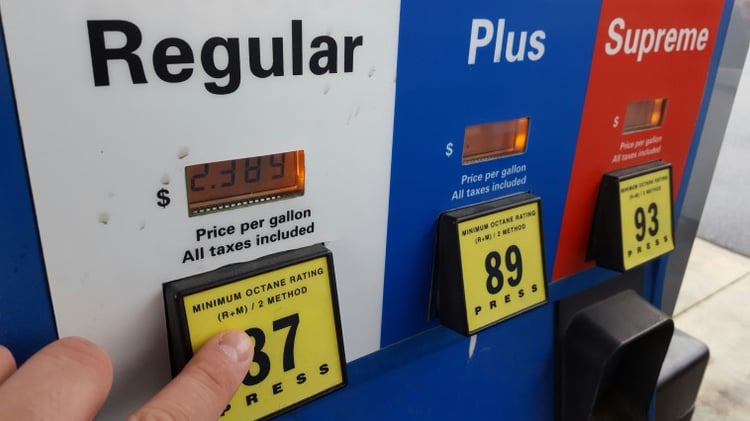
A common way for companies to track their fleet spending is to collect fuel receipts from drivers every time a purchase is made. Accounting personnel then need to store those receipts and manually record total gallons and dollars for all drivers. The process can be incredibly tedious and rife with errors. Using a fuel card can help mitigate these issues by reporting detailed transaction information on invoices and reports, eliminating the hassle of receipts for both drivers and accounting teams alike.
Reasons to track your fuel spend
There are three main reasons to track a fleet’s fuel spend: 1) for driver monitoring, 2) for tax purposes and 3) to audit company expenses.
Monitoring purchases is critical for ensuring that employees adhere to your fuel card policy. The policy by itself means little if you don’t regularly check transactions to confirm compliance. It’s important to verify that drivers purchased fuel at the correct locations, during work hours, and that gallons are consistent with routes. For companies that elect to pay by credit card or cash, it’s even more important to review gas station receipts to prevent fraud.
Besides driver monitoring, many companies must track spend for tax-related reasons. This is especially true for fleets operating interstate that must report fuel usage by vehicle as part of their quarterly IFTA filing. Other businesses may need to track fuel spend to file off-road diesel fuel tax refunds or agricultural fuel refunds. In either case, there is a need for accurate information about gallons and dollars to ensure proper tax filings.
Accuracy is also critical for tracking company expenses. Because fuel purchases often account for a large portion of a company's total business expenses, accounting personnel need access to accurate information in a timely manner. Prudent companies record expenses in preparation for a possible audit. In fact, many companies perform internal audits of their departments to identify any irregularities. Which is why this data must be organized for easy review.
The problem with paper fuel receipts
Many companies continue to rely on paper receipts from gas station pumps to keep track of their purchases. This system is problematic. The most obvious risk is that the receipt is either not collected or lost at some point. And once the receipt is gone, it’s gone for good. There are no back-up copies. That’s a lot of pressure for drivers and accounting teams.
Even if receipts are collected every time and submitted without fail, it can be a painstaking process for accounting departments to sift through them. Imagine having to collect, file and review every piece of paper from every driver for every vehicle. Consider how many vehicles you have and how often those vehicles are fueled daily, weekly and monthly. In addition, receipts from previous years should be kept in case of audits. Good luck tracking down specific information when you need it.
Even with the most organized system for filing paper receipts, someone must still do the work of adding them up. It’s a difficult task to take individual receipts and turn them into useful data. Most companies need the ability to not only review individual purchases but compare totals and trends across drivers, vehicles, departments and divisions. Manually adding up receipts takes time, and that time is likely better spent elsewhere. Not to mention, the potential for error is high and unnecessarily so since simpler solutions are available.
Use a fuel card to collect your data.
Invoices and reports from card programs offer a more comprehensive way for tracking your company’s fuel spend with greater administrative efficiency. The need to collect and save fuel receipts is eliminated, and most programs capture significantly more information at the time of fueling than is reflected on the receipt from a cash, credit card or debit card purchase. Level III data is captured so that management can carefully review the price, gallons, fuel type, date, time, location, odometer and other card information for each purchase, at any time.
Most invoices will include subtotals by driver, vehicle, fuel type and department, in addition to the total invoice amount. This eliminates the need to add up receipts, and determining company fuel spend for a given period becomes much faster. And, because invoices are available electronically, by email, or online, accounting teams can easily access historical data.
For added convenience, many companies provide custom reports to organize fueling data however you need. Reports can highlight specific groups of drivers and vehicles for fleet monitoring, company audits or tax filing purposes. Reports are often available for custom time periods to accommodate the needs of various management and department personnel.




